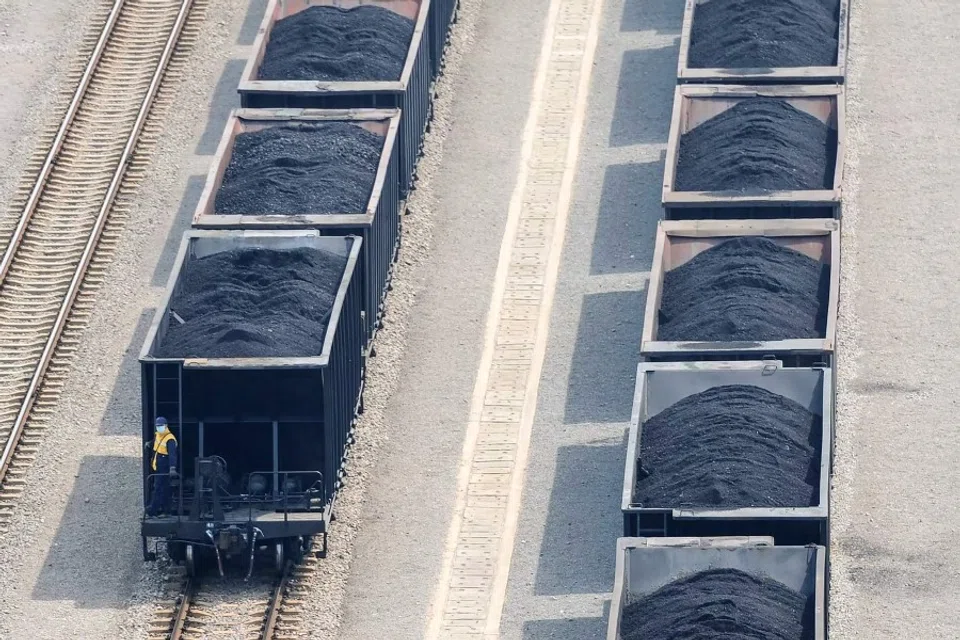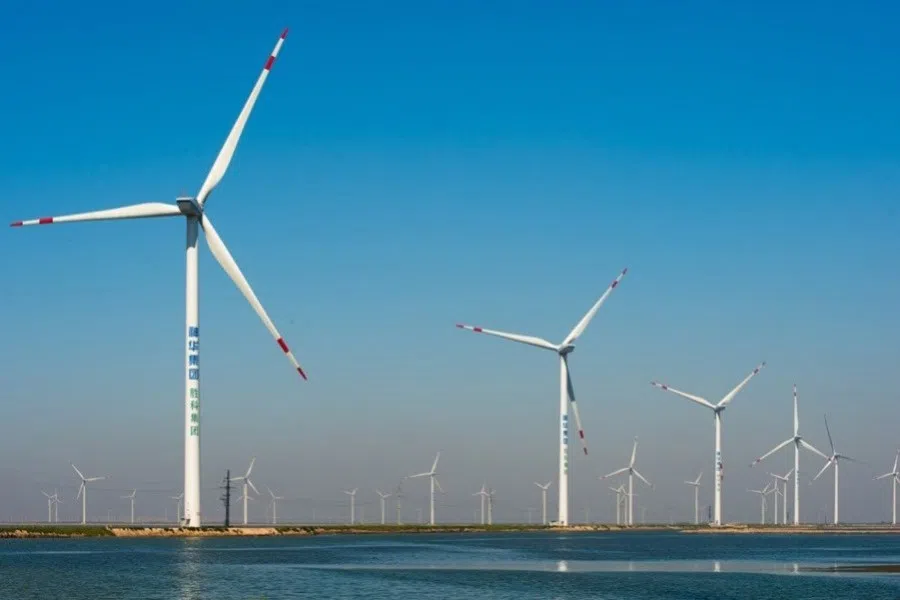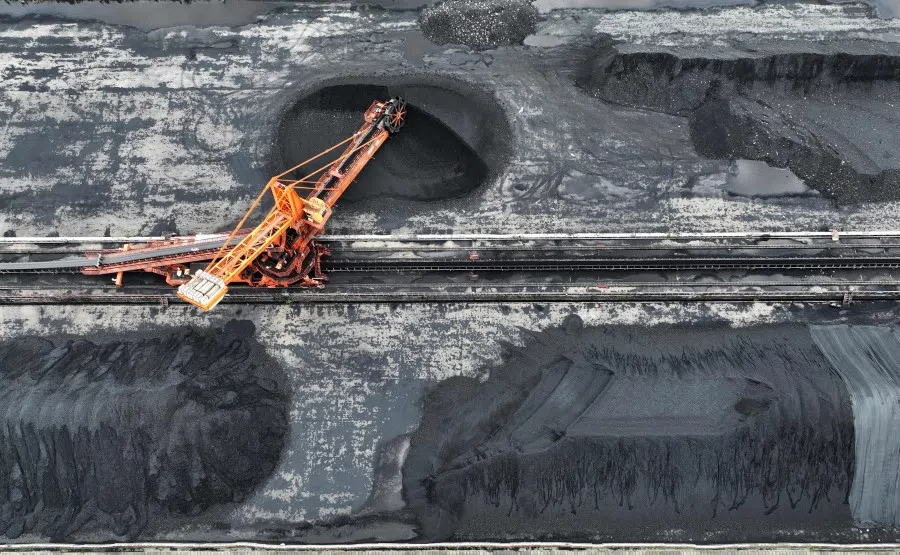A happy birthday to China's national emissions trading scheme
Erik Baark points out some of the peculiarities of China's emissions trading system (ETS) with Chinese characteristics on its one-year anniversary. Going forward, will the Chinese ETS gradually morph into an ETS in the likes of the EU ETS as it works towards meeting its dual carbon ambitions?

With much inspiration from the global climate change debate, its own participation in the post-Kyoto Clean Development Mechanism, as well as the EU's launch of a carbon dioxide emissions trading system (ETS) in the early 2000s, China initiated seven provincial or city pilot ETS schemes during 2013-2014.
The experience of these pilot ETS schemes varied considerably, and to a large degree reflected more command economy regulation than the influence of markets. Nevertheless, the central government decided to launch a national ETS a year ago on 16 July 2021, under the responsibility of the Ministry of Ecology and Environment (MEE), in order to create a market for emissions in the electric power sector.
This national ETS is the largest in the world - as both Chinese and overseas observers relentlessly remind us - comprising a cumulative trading volume of 194 million tonnes and a trading value of 8.492 billion RMB (US$1.25 billion) in 2021. The market covers 2,162 electric power plants, a sector that contributes nearly half of the country's carbon emissions
An emissions trading system with Chinese characteristics
The curious nature of this Chinese ETS, which is now one year old, makes it stand out among the global attempts to use market forces to reduce carbon emissions while encouraging industries or agriculture to innovate using clean technology.
The European ETS scheme experienced major challenges - such as a large surplus of free allowances and a ridiculous price for a tonne of CO2-equivalent emissions - during its initial phase, but such problems largely vanished when auctioning of emission permits was introduced for phase 3 of the EU ETS in 2013.

However, China had received extensive assistance from the European Commission when setting up its pilot regional ETS schemes, and Chinese observers had the opportunity to gain some hard-won lessons from the six years of running the pilot schemes. Nevertheless, the final design for the national ETS market reflected esoteric priorities of political ideology and vested interests rather than the practical issues of creating a system that would actually reduce emissions in the long run.
Political ideology in China has long maintained that the country's emissions should be set relative to its GDP, i.e. a cap that would increase with each unit of GDP growth...
Trade, instead of cap
Internationally, ETS are often called "cap-and-trade" arrangements, since governments are expected to define fixed caps on the maximum amount of emissions and then firms that exceed the amount will need to trade, that is, buy emission permits from firms that have effectively reduced their emissions. Most ETS will gradually lower the cap, i.e. reduce the total amount of carbon emissions - providing strong incentives for units to innovate and cut emissions substantially.
In China, however, the emphasis is always on the trade aspect, while the cap portion is somewhere flying in the air. Political ideology in China has long maintained that the country's emissions should be set relative to its GDP, i.e. a cap that would increase with each unit of GDP growth, and emission allowances have instead been called a tradable performance standard (TPS). In other words, China's ETS is designed for increasing emissions, regardless of whether some of the firms covered will succeed in reducing their carbon intensity in production (lower amount of CO2 emitted per RMB).
The 'dual carbon' policy
In 2020, President Xi Jinping caught everybody's attention with his announcement of the "dual carbon" (shuangtan 双碳) policy, that is, the dual targets of peaking China's carbon emissions by 2030 and achieving carbon neutrality by 2060. Thus, for the first time, a Chinese leader ventured to set fixed carbon emission caps - in this case, a cap effectively reducing emissions to zero in 2060. But Xi Jinping has also repeatedly cautioned that such a transition could not be achieved overnight, maintaining the flexibility of relative caps for the foreseeable future.
Without fixed caps, we have to rely on other indicators to gauge whether electric power companies are feeling the pressure to reduce emissions...
Although the national ETS is expected to play a key role for China to achieve its dual carbon targets in the future, it is likely to fail if it continues with its present institutional framework. Actually, the proudly announced size of the total volume and value of trade tell us very little about the potential of the ETS to ensure that carbon emissions are in fact reduced.

Without fixed caps, we have to rely on other indicators to gauge whether electric power companies are feeling the pressure to reduce emissions - and information on the price of a Chinese tonne of CO2 emissions could be one such indicator. The price levels in a particular carbon market can determine the scheme's ability to deter enterprises and society from continuing to choose less expensive but more polluting options.
Prices of carbon emission permits
When China ran its regional pilot ETS schemes after 2013, the price per tonne of CO2 emissions varied over time, often increasing when the dates for compliance verification were approaching - as one would expect for a market-based system.
However, there were significant differences between the average price that each regional pilot ETS obtained, ranging from 49.88 RMB in Beijing to 3.38 RMB in Chongqing. Inter-regional trade was apparently not happening (otherwise units from Beijing could have purchased cheap CO2 allowances in Chongqing); it is expected that the national ETS will be able to increase trade among electric power companies countrywide.
The average price for a tonne of emissions allowance in China's ETS has hovered between 40 and 60 RMB per tonne, which is equivalent to 5.60-8.69 euros. This is only a fraction of the EU ETS, where the average price has moved up to more than 90 euros recently. There are several reasons for this discrepancy.
The current maximum penalty in China has been set at 30,000 RMB (about US$4,400), providing an insufficient monetary disincentive for non-compliance.
Firstly, the fixed cap for emissions in the EU ETS has been progressively reduced by 1-3%, while the Chinese ETS has maintained its relative cap. Secondly, the EU ETS has cut down on free allocations of emission permits and gradually auctioned a larger share, while the Chinese ETS continues free allocation for the vast majority of permits - and the number of free permits is furthermore set according to moving carbon-intensity benchmarks, where the current lax benchmark standards adopted by the national ETS will lead to an excess surplus of permits. Indeed, a recent survey among executives concerning the ETS indicated that up to 50% of power sector respondents believed that they would have allowances surplus to their compliance needs.
Thirdly, the financial penalties for exceeding the set quota of emissions are substantial in the EU ETS, while the Chinese penalties appear to be relatively lenient. The current maximum penalty in China has been set at 30,000 RMB (about US$4,400), providing an insufficient monetary disincentive for non-compliance.
Power supply reform
The choice of the electric power sector as the initial focus of China's national ETS seemed reasonable because that sector generates 40% of CO2 emissions and because it is populated by state-owned public utilities that would appear responsive to government priorities. However, since the sector is highly regulated, the introduction of market forces actually does not operate well, with the National Reform and Development Commission (NDRC) setting price levels for consumers.
For household residents, the price of 1 kWh is around 0.5 RMB, which is low by international standards. That price is cross-subsidised by slightly higher prices charged to industries and services, but the electric power grid operators are not at liberty to charge consumers on the basis of the cost of production.

Thus, despite the efforts by the central government to carry out a reform of the electric power generation and distribution during the last decade, the price of electricity is still not linked to the cost of production in China, partly to avoid potential social protests.
Furthermore, the regulatory authorities are different, with NDRC and the National Energy Administration (NEA) responsible for the electric power sector, while the MEE is responsible for the national ETS. In China, the difficulties of coordinating activities across such bureaucratic silos can be daunting, and there is unfortunately little evidence of truly integrated policies that would reform both the power sector and the emissions market to achieve cost-effective and penetrating decarbonisation in China.
In response to a request from China, the International Energy Agency (IEA) conducted an analysis of the interactions and effects of China's national ETS with its renewable energy policy in the electricity sector. The report demonstrates how the policy mix could be better coordinated and explores possible pathways that an enhanced ETS could lead the electricity sector toward an emissions trajectory that is in line with China's carbon neutrality target.
Data: issues of verification
A well-functioning ETS system depends heavily on reliable standards and procedures for obtaining "measurable, reportable and verifiable (MRV)" data, that is, generating transparent data for carbon emissions. Unfortunately, there have been several incidents where MEE has exposed fraudulent reporting by local service providers, and the ministry has called for improved quality of carbon emission reporting in the power sector. The administration of the MRV procedures usually belongs to the provincial department for ecology and environment, which has quite a few other pressing tasks and only took over monitoring of carbon emissions a couple of years ago.
Future hopes: extended scope and international linkages
The Chinese leadership appears aware of the need for further reform, but cautioned that the transition to a new energy system that is less dependent on coal-based power generation will take some time. Therefore, China's 14th Five-Year Plan for energy merely mentioned strengthening market-based mechanisms for trading energy use rights while aligning them with carbon emissions trading.

However, the plan has also put forward ambitions to extend the scope of the national ETS beyond electric power, and the MEE expects to include eight high-energy-consuming industries from before 2025, including power generation, iron and steel, construction materials, non-ferrous metals, petrochemicals, chemicals, paper manufacturing and aviation, with a total of approximately 8,500 large emission-intensive enterprises.
... Chinese leadership has maintained its ideological commitment to a peculiar carbon-intensity framework, and this is not immediately comparable to the requirements of carbon emission permits in the EU.
The key remaining question is whether China's national ETS will gradually grow into a system that is aligned with the quality and standards implemented in other systems such as the EU ETS. And while the prospects are promising given China's earlier positive engagement with the global post-Kyoto Clean Development Mechanism, the reality is that the Chinese leadership has maintained its ideological commitment to a peculiar carbon-intensity framework, and this is not immediately comparable to the requirements of carbon emission permits in the EU.
As one observer has noted, the Chinese national ETS is still in its infancy, and we should be wishing it well on its first birthday. Once it reaches maturity, it is likely to help the Chinese leadership achieve its dual carbon ambitions - and thus help the rest of the world combat climate change.





